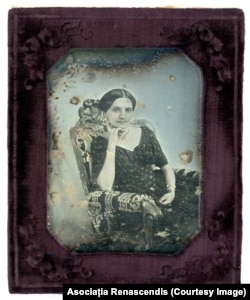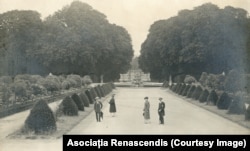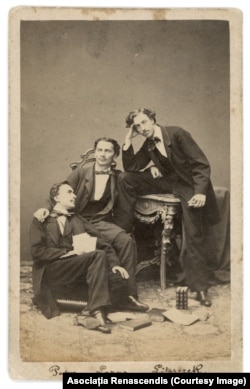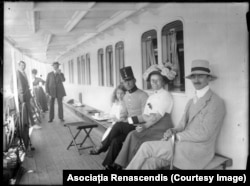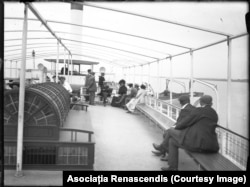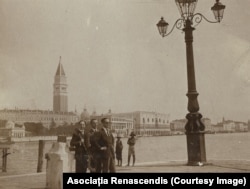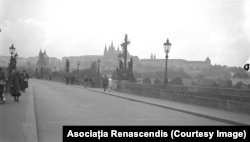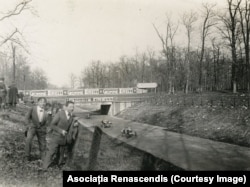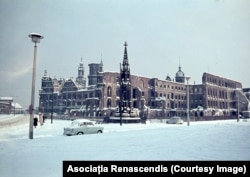BUCHAREST -- The National Museum of Old Maps and Books in Bucharest is hosting an exhibition of historical photographs dedicated to Romanians and their travels abroad. These vintage photos offer a fascinating glimpse into a bygone era of travel and far-flung destinations.
Romanians' interest in traveling beyond Vienna, Prague, or Istanbul (then called Constantinople) grew significantly in the 1800s, as noted by such travelers as Nicolae Milescu Spataru, Petru Cercel, Constantin Cantacuzino, and Dimitrie Cantemir. And their appetite for travel and adventure happily coincided with the popularity of photography.
Grigore Miculescu, a prominent nobleman who sought both leisure and political refuge abroad, wrote in 1857 to his brother about his plans to visit a newly discovered spring near Vidin in Bulgaria.
"We are now making our way to France, but I have heard from several people that beyond Vidin lies a spring where many people suffering from diseases go to heal. We have decided to visit before venturing on to Paris."
For many, the ability to travel the world and follow in the tradition of artists, writers, and aristocrats was a mark of distinction, demonstrating wealth, education, and cultural sophistication.
In the 19th century, Vienna served as a hub for Romanians seeking educational and medical services, facilitated by the Habsburg transport network. From Vienna, travelers could reach various European destinations, including Prague, Berlin, London, Paris, Venice, and Rome, via rail and ship.
The introduction of steamboats further connected Romania with the wider world, as documented by historian and author Constantin Ardeleanu in his book From Vienna To Constantinople On Board The Vessels Of The Austrian Danube Steam-Navigation Company (1834-1842).
"The Austrian ship was the main means of transport that connected Romania with the wider world. It was the first engine of the Industrial Revolution that Romanians experienced directly at home. After 1834, steamboats became a regular presence in the ports of the Romanian Danube."
The sight of the ships was always of keen interest to those along the riverside who would stop and admire its grandiosity and view the well-dressed, sometimes noble travelers as they sailed.
One such traveler was the then-newly named lord of Moldavia (1822-28), Ionița Sandu Sturza, who set off on August 12, 1822, from Constantinople, Ardeleanu noted.
Radu George Barla, president of the Renascendis Association, which organized the Bucharest exhibition, noted that the focus is the period from 1890 to 1990.
"The selection somewhat aligns with the evolution of Romanians' habits of traveling abroad in a period when many were also amateur photographers and carried their cameras with them," Barla said.
Not everyone enjoyed their travels, historian and literary critic Eugen Lovinescu lamented in his Letters And Documents.
"These vacations are wonderful, but they have one flaw: They make you unable to work. In a month, I only read three books!" he said.
Lovinescu also wrote of his perceptions of places he had read deeply about and how they measured up to reality.
"When I first landed in Greece (1902), I did not come to see an unknown country, but only to identify it with the [Hellenistic Greece] of my readings," he said.
The mismatch between reality and fiction did not prevent him from continuing his travels and visiting France, Italy, and the thermal baths of Karlovy Vary in today's Czech Republic.
In the early 20th century, Romanian travelers such as Octavian Goga -- who would later become prime minister -- shared their impressions of exotic locations. In a 1906 letter to his friend Ilarie Chendi, Goga wrote about Algiers:
"The coasts of Africa provide us with Muslim mirages. If you were with us, you'd smoke hashish and then we would go out, without the ladies, to watch the belly dancers."
"We are used to discussing foreign photographers who photographed in Romania, but we know very little about Romanians who went abroad. Very often, their photographic works are of exceptional quality and capture exotic places and times as far as North Africa or Asia," Barla says of the Renascendis archive.
The exhibit also sheds light on everyday life experienced by Romanians, often found within family albums. These photos document a changing world through world wars, Soviet influence, the socialist republic with its travel restrictions, revolutions, and the post-communist era.
The Renascendis archive, which has grown to over 100,000 photographs, hopes that more Romanians will preserve and digitize their photographic heritage, offering valuable insights into the country's historical travel culture.





